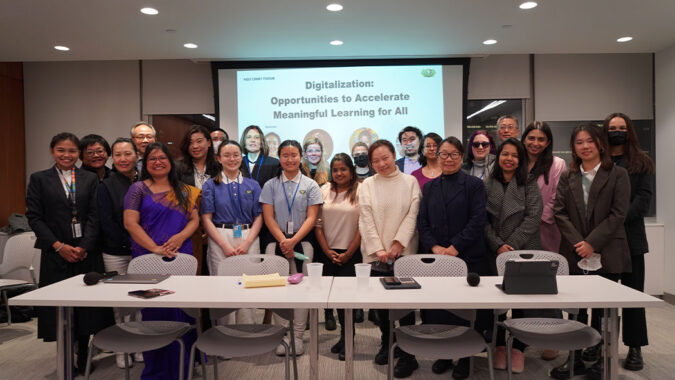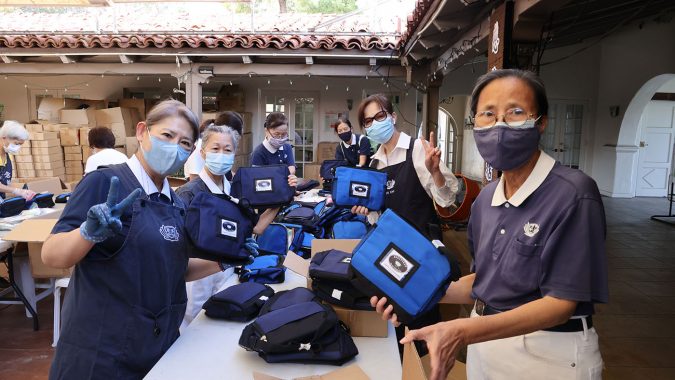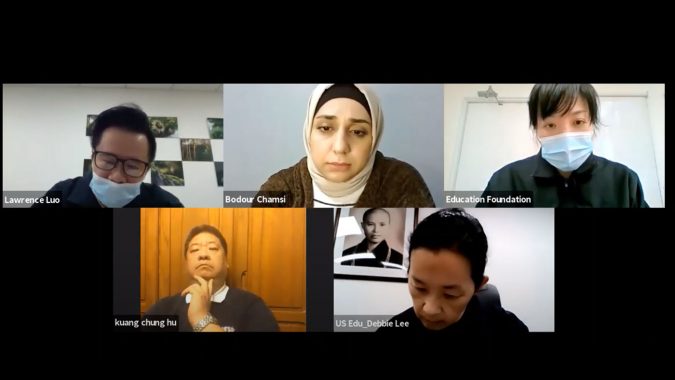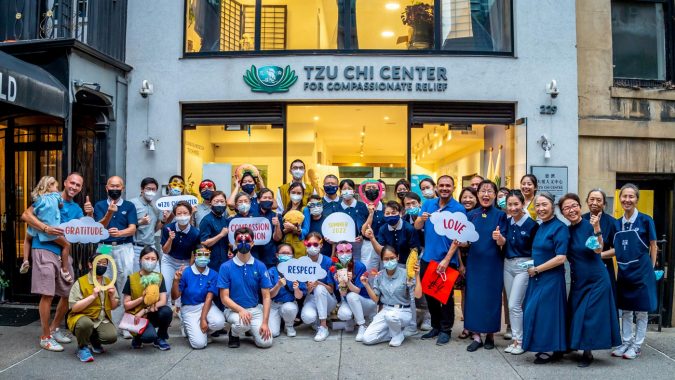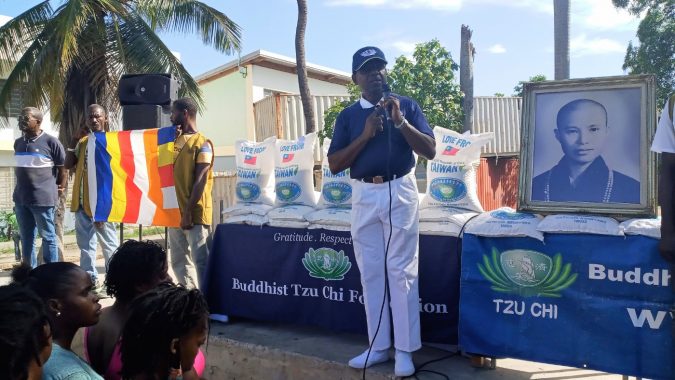
Written by Pheel Wang and Jennifer Chien
Translated by Sophie X. Song
Edited by Ida Eva Zielinska
“I saw an emaciated mother with her three young children under a makeshift tent. There was a baby, looking no older than one, wrapped in a piece of plastic for warmth on the ground, and something was cooking on a fire made up of a pile of stones and firewood nearby,” Tzu Chi Haiti volunteer Johnson Chang wrote.
As the leader of Tzu Chi’s disaster relief team in Haiti, Johnson was reporting what he saw in areas impacted by the earthquake that struck the nation on August 14, 2021, trying to remember all the suffering he witnessed in his heart. “Over the last few days, I drove from the capital city to the disaster-stricken area on my own. None of the problems I encountered could compare to what these earthquake survivors had suffered. I hope that relief supplies will be delivered to them as soon as possible.”


The first team of Tzu Chi volunteers assessing conditions after the earthquake saw a mother with her young children living under a makeshift tent on the ground. Photo/Johnson Chang
Les Cayes Is Hit Hardest
The summer of 2021 was not a peaceful one for the Republic of Haiti in the Caribbean. On July 7, Jovenel Moïse, the president of Haiti, was assassinated, and the country entered a state of emergency due to the ensuing political turmoil. Then, on August 14, a magnitude 7.2 earthquake shook Haiti.
The epicenter was approximately eight miles from Petit Trou de Nippes in the Nippes Department of the country, located about 80 miles west of Haiti’s capital, Port-au-Prince.
As of August 22, the death toll stood at 2,000 lives lost, with more than 10,000 people injured and over 130,000 buildings destroyed. The disaster was particularly devastating for the city of Les Cayes, in the Sud Department.


“Buildings have been damaged to various degrees. Some were destroyed, while others tilted or the walls cracked, as their age, design, and quality of construction varied. In Les Cayes alone, more than 30 schools have been damaged,” Johnson Chang reported. He led an assessment team to Les Cayes, having left the capital on the morning of August 21 and driven four and half hours to conduct an initial assessment of damages in the city.
Even before the earthquake and recent tropical storms, Haitian children had not attended school for several months due to political turmoil and the COVID-19 pandemic. Now that this latest catastrophe has compromised safety in many damaged school buildings, when will the students return to school?
Of the 255 schools in the hardest-hit area in the Sud Department, 94 schools were damaged or destroyed by the earthquake. It was estimated that 540,000 children were affected by this disaster, according to statistics from the United Nations Children’s Fund (UNICEF).
The Tzu Chi team inspected the Sœurs Salésiennes school in De Mapou, Les Cayes, and learned about the damages the school incurred from the nuns. They also went to Perrin, Villejoint 7ème Section Communale, Pont de la Ravine, Gelée, and La Porte. Wherever there was a stretch of empty land, dozens or even thousands of families had each propped thin plastic sheets as makeshift shelter and floor on the yellow-brown ground. They lacked water and electricity and couldn’t cook under these harsh living conditions.
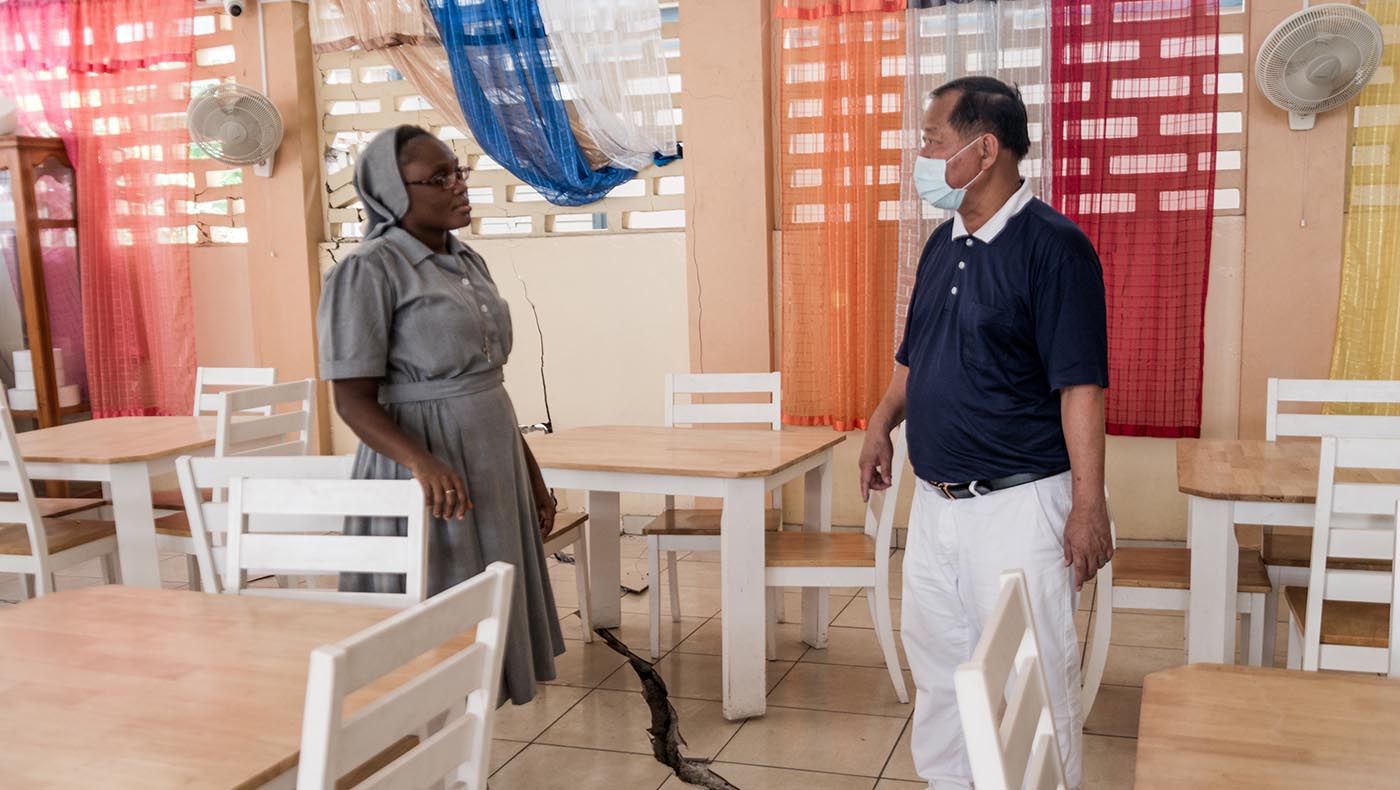



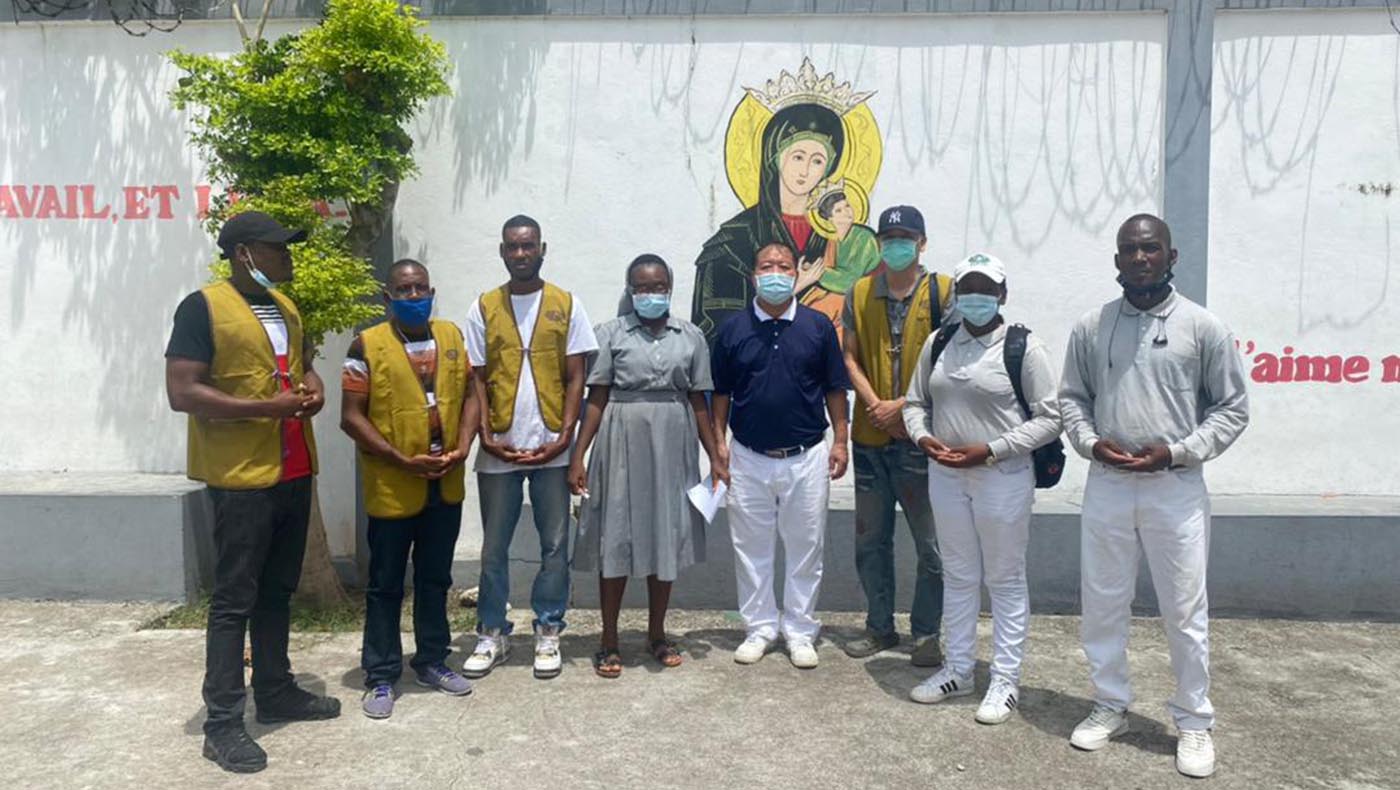
As far as the eyes could see, a large-scale humanitarian crisis was brewing in Haiti. As the team interviewed families, it became clear that even the most fortunate could only speak of the pillars of their houses that still stood supporting a weakened roof, but all the walls had crumbled. The houses of those less fortunate had all been razed to the ground.
At present, more than 300 people were still missing in the disaster area, and every day the excavation effort to dig up bodies brought heartbreaking news for many families. But the survivors not only had to contend with their shattering grief but were also suffering due to insufficient drinking water, food, clothing, shoes, and an extreme shortage of medical supplies.
Additionally, with tropical storms and even severe mudslides threatening this area, people feared that the houses might collapse at any time and chose to tremble in the streets or shelter in tents rather than return indoors.






Mobilization
Volunteers in Haiti continued to report first-hand news from on the ground in Haiti to the Buddhist Tzu Chi Foundation’s global headquarters in Taiwan and Tzu Chi USA. Their reports covered local travel conditions and safety concerns, identified essential aid supplies, and chronicled their search for safe and suitable distribution venues. Essentially, they provided valuable information in preparation for the large-scale disaster relief and volunteer deployment that will begin soon.
“The road out of the capital city and close to the city of Carrefour is held by criminals, so we try to drive past them quickly,” Johnson Chang shared in one report. Armed bandits robbed disaster relief teams from many countries on that road from Port-au-Prince to the area affected by the earthquake. Not only that, but residents in the disaster zone had also begun to riot because the government’s disaster relief had still not arrived.
Therefore, the assessment team also met with Madam Sylvie Rameau, Mayor of Les Cayes, and asked the local government to help keep the relief teams safe and provide more information on the aftermath of the disaster. In addition, they also assessed several possibly suitable venues for storing and distributing supplies and serving hot food.


On August 22, the assessment team meets with Madam Sylvie Rameau, Mayor of Les Cayes, for detailed discussions. Photos/Réginald Louissaint Junior
“We must consider safety and available space for storage. For example, Tzu Chi’s partner in Haiti, the Salésiens de Don Bosco, has a vocational training center in Bergeau. It has two kitchens that can serve hot food for 500 people. The Sœurs Salésiennes also has a similar space. The Taiwan Technical Mission has a branch in the south that would be suitable for storing supplies,” the assessment team reported.
During the day, the team wore themselves out with constant activity in the disaster area until they were exhausted by night. Even so, they wrote detailed reports of the situation.
Tzu Chi’s long-term cooperator in serving slum families in Port-au-Prince, the Salésiens de Don Bosco, is highly respected by Haitian residents. Therefore, it would be relatively safe to hold a distribution there. On the other hand, electricity is a luxury in Haiti, and church schools have clean water and electricity, as well as organized manpower and logistics resources. They can better assist Tzu Chi in supplies distribution. Lastly, the Taiwan Technical Mission branch has clean water, walls, adequate lighting, and armed security.
Disaster Assessment Team Report


A warehouse in the Taiwan Technical Mission’s branch in south Haiti can safely store large quantities of relief supplies. Photos/Réginald Louissaint Junior
The team delivered information without delay through social media and video conferences with Taiwan, the United States, and other locations where Tzu Chi volunteers are preparing relief supplies and will leave for Haiti soon. Tzu Chi hopes to uphold its “Direct, Focus, Respect, Pragmatism, and Timeliness” principles in international relief.
Thanks to the assessment team’s combined and extensive disaster relief experience, Tzu Chi can consider various factors as it formulates the aid mission, making accurate decisions promptly. For instance, food supplies should include items that Haitians often eat, which won’t spoil quickly even without adequate storage, and are easy to cook. In addition, the weight of food supplies should not be too heavy for women or those walking to carry.

From September 1 to October 30, a disaster relief team composed of volunteers from Taiwan and Tzu Chi USA will travel to Haiti in several waves. They will gather and distribute aid supplies, provide free medical consultations, spiritual support, and volunteer training, and engage in mid- to long-term reconstruction planning.
The first food distribution will occur in early September and provide 5,000 households with sufficient food for four to six people for an entire month. Tzu Chi will distribute more food, medical kits, eco-blankets, water purification pills, beds, and other supplies later on. Soon, earthquake survivors won’t have to sleep on the ground or try to stay warm under a piece of plastic at night on an empty stomach.


Upon his return to Port-au-Prince, Johnson Chang noticed a photo of a male Tzu Chi community volunteer in tears. He could empathize with how the man was feeling, pondering the same question himself, “How can one man help thousands of families suffering as a result of this disaster?” The only way is to keep going, one step at a time.
It hurts to see Haiti this way, and I indeed feel powerless. But seeing Tzu Chi members around the world showing love and concern for the survivors, I know that I must be strong!
Johnson Chang, Tzu Chi Haiti Volunteer
We invite you to support Tzu Chi’s Pathway to Hope: 2021 Haiti Earthquake Relief Mission. Together, we can provide the assistance the people of Haiti so desperately need at this very moment.














